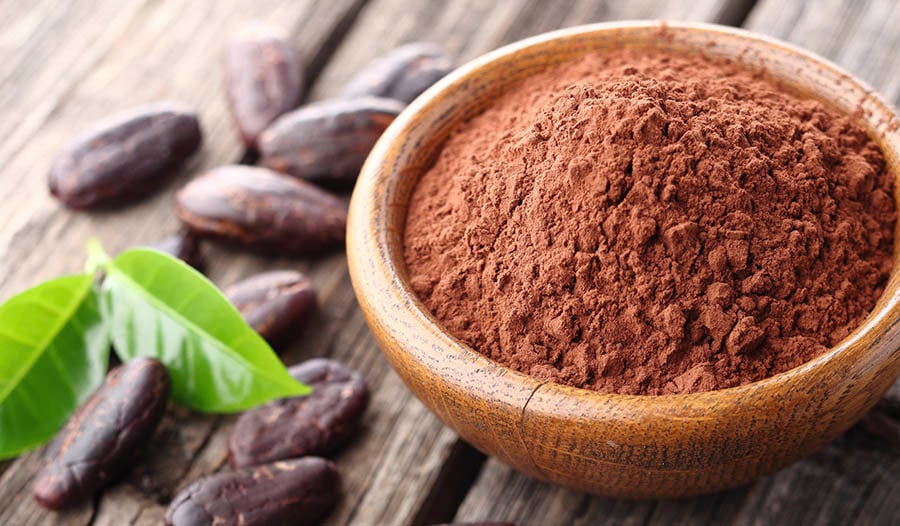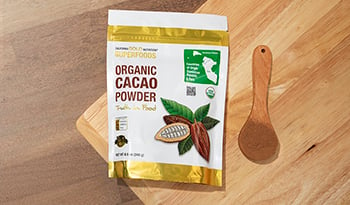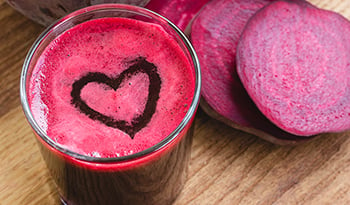Cacao: Benefits, Heart Health, Cognitive Function, and More
FERAGAT:Bu blog tanı koymayı hedeflememektedir...
- Bu makalede:
- How Is Cacao Powder Made?
- Cacao vs. Cocoa: What's the Difference?
- Cacao Is Rich In Flavonoids
- Cacao's Health Benefits
- Cacao's Heart Benefits
- Cacao's Brain Benefits
- Does Raw Cacao Contain Caffeine?
- How to Use Cacao Powder

The cacao bean is the source of perhaps the most magical and beloved foods on Earth because it is the source of chocolate. Even the cacao tree's official name, Theobroma cacao, recognizes the long-standing love most of us have for the fruit of this tree. Theobroma comes from the Greek language for "food of the gods." And while chocolate is the most popular and favorite of these foods from the cacao bean, an even healthier choice is raw cacao powder.
How Is Cacao Powder Made?
To produce raw cacao powder, raw cacao beans are simply cold pressed to remove the fat, and the remaining solids are ground into a fine powder.
Cacao vs. Cocoa: What's the Difference?
Cacao powder contains all the beneficial nutrients and beneficial compounds of the raw cacao bean minus the fat. In contrast, cocoa powder is made from roasted cacao beans. And even if they look alike, the two are different. In making cocoa powder, up to 90% of the nutrients and beneficial compounds in raw cacao beans are removed.
Cocoa powder is produced from cacao beans that are fermented, dried, and roasted at high heat. And in the Dutch processing method, the beans are initially washed with an alkalizing solution containing potassium carbonate, sodium carbonate, and/or sodium hydroxide. The goal is to remove the bitter components, which further depletes the health benefits.
The Dutch process reduces the total flavonoid content by 60%. The beans are ground into a paste to separate and remove the cocoa butter with or without alkalinization. The remaining solids are ground into a fine powder. In the process of making cocoa powder, nutrients, and health benefits are significantly lost.
Cacao Is Rich In Flavonoids
The beneficial effects of raw cacao powder are primarily due to its flavonoid content, which makes up as much as 48% of the dry weight of the cacao bean. By comparison, cocoa powder only contains 10% flavonoids. Fifteen grams (approximately two tablespoons) of raw cacao powder provides more than 400 mg of flavonoids, while the same 15 grams of cocoa powder may contain only 78 mg.
The key flavonoids in cacao powder are flavanols like those in green tea and proanthocyanidins like those in many berries and grape seed and pine bark extracts.
There are also compounds in cacao that increase the absorption of flavonoids. Mainly it is the unique ratio of heart-healthy saturated fats, which do not raise cholesterol levels. The prebiotic dietary fiber also promotes beneficial effects on the composition of the intestinal microbiome, enhancing the absorption of cacao polyphenols.
Cacao powder is also rich in nutrients that promote heart health, such as magnesium and arginine, the amino acid that produces the compound nitric oxide in blood vessels to help control vascular function and prevent clot formation.
Cacao's Health Benefits
Most research on foods containing cacao flavonoids has focused on brain and heart health. Here is a summary of these benefits:
- Boosts blood flow to the brain.
- Enhances brain function by improving signaling pathways that promote brain connectivity.
- Promotes the health of the vascular lining.
- Protects against oxidative damage to cholesterol and the lining of the arteries.
- Prevent the excessive clumping of blood platelets that causes blood clots.
Cacao's Heart Benefits
One of the critical ways that cacao flavonoids produce these effects is by improving the health and function of the cells that line blood vessels. All blood vessels, from the tiny capillaries to the aorta, have a lining composed of endothelial cells. If all the body's endothelial cells were laid out flat, they would have a surface area almost the size of a soccer field.
Endothelial dysfunction is a critical issue in cardiovascular disease and is found in all conditions associated with poor vascular function, such atherosclerosis, high blood pressure, and diabetes. What causes this endothelial dysfunction is damage caused by toxins (e.g., cigarette smoke), high blood sugar levels, and damage due to pro-oxidants like oxidized LDL-cholesterol.
Cacao flavonoids can help prevent this damage and promote the cell's ability to manufacture nitric oxide, a key chemical the vascular system uses to promote vascular flexibility, proper blood flow, and prevention of clot formation.
Cacao's Brain Benefits
Much research has focused on the beneficial effects of cacao preparations on brain health and cognitive function. Most of the studies have used cocoa powder, but as pointed out above, cacao powder contains much higher concentrations of key compounds and should produce even better results.
Studies with cocoa powder have utilized a variety of standardized tests that evaluate memory, attention, decision-making, the comprehension of language comprehension, and other measures of mental processes. There have been fifteen double-blind studies that compared cocoa products were compared to a placebo or low-flavanol cocoa product. Of these fifteen trials, ten showed significant positive effects on brain function, while five showed no significant effects.
However, it is important to note that even in the studies where an improvement in cognition could not be shown, there were other measures that did show improvements, such as a reduction in mental fatigue, decreased reaction time, increased processing speed, increased brain blood flow or volume in specific areas of the brain, and increased levels of beneficial brain compounds.
The dosage of cocoa flavanols in these fifteen studies ranged from a low dosage (e.g., 50 mg per day) up to 994 mg per day. The duration of these studies typically ranged from one to three months.
The benefits of cacao flavanols are seen in the elderly and in younger adults. And sometimes, the effects are seen within two hours after ingestion. However, higher dosage levels and longer duration generally produced better results in both old and young subjects.
In one of the best-designed studies, healthy older subjects who consumed a cocoa drink with a high-flavanol content (900 mg) for 3 months experienced greater blood volume in a key brain area (the dentate gyrus) associated with memory. Generally, as people age there is a decline in both blood flow and function in this region of the brain. The increase in blood volume in this area produced by cocoa flavanol ingestion was linked to improved performance of a memory task specific to this area. Other studies have shown additional objective measures beyond blood flow that support cocoa flavanols producing an overall effect on brain health. For example, several studies have shown cocoa flavanols to increase brain-derived neurotrophic factor (BDNF) in older and younger adults. This compound stimulates the formation of new brain cells to replace damaged or old brain cells.
Does Raw Cacao Contain Caffeine?
Yes, raw cacao powder does contain caffeine and even more of a similar compound known as theobromine. The big difference is that theobromine is about ten times weaker than caffeine in producing a stimulant effect. A two-tablespoon serving of raw cacao powder provides about 40 mg of caffeine, a little less than half the coffee cup, and about 200 mg of theobromine. Overall, the stimulant effect of two tablespoons of raw cacao is roughly the same as half a cup of coffee.
How to Use Cacao Powder
Using raw cacao powder may be the easiest and most cost-effective way to add the beneficial cacao flavonoids to your diet. Here are a few suggestions:
- Add two tablespoons raw cacao powder to your smoothies. If you need to sweeten it up, add allulose, xylitol, monk fruit sweetener, or stevia to taste.
- Add one tablespoon raw cacao powder and chopped dates to a serving of plain Greek yogurt.
- Sprinkle cacao powder over your favorite fresh fruit. Blueberries, strawberries, pineapples, and bananas are great choices.
Hot Cacao Drink Recipe
And here is my favorite way to get raw cacao powder into my day. I start the process by heating almond or coconut milk, then pour it into a big mug. I then add two to three tablespoons of cacao powder and one tablespoon of allulose (you can also use xylitol or erythritol). I then use a small hand mixer to blend. And often, I will enhance the flavor of my special brew by adding 1 tablespoon of coconut oil, ½ to 1 tsp of cinnamon, ¼ to ½ tsp of nutmeg, two drops of vanilla extract, two drops of peppermint oil.
References:
- Montagna MT, Diella G, Triggiano F, Caponio GR, De Giglio O, Caggiano G, Di Ciaula A, Portincasa P. Chocolate, “Food of the Gods”: History, Science, and Human Health. Int J Environ Res Public Health. 2019 Dec 6;16(24):4960.
- Andres-Lacueva C, Monagas M, Khan N, Izquierdo-Pulido M, Urpi-Sarda M, Permanyer J, Lamuela-Raventós RM. Flavanol and flavonol contents of cocoa powder products: influence of the manufacturing process. J Agric Food Chem. 2008 May 14;56(9):3111-7.
- Goya L, Kongor JE, de Pascual-Teresa S. From Cocoa to Chocolate: Effect of Processing on Flavanols and Methylxanthines and Their Mechanisms of Action. Int J Mol Sci. 2022 Nov 18;23(22):14365.
- Martin MÁ, Ramos S. Impact of cocoa flavanols on human health. Food Chem Toxicol. 2021 May;151:112121.
- Tan TYC, Lim XY, Yeo JHH, Lee SWH, Lai NM. The Health Effects of Chocolate and Cocoa: A Systematic Review. Nutrients. 2021 Aug 24;13(9):2909.
- Sun Y , Zimmermann D , De Castro CA , Actis-Goretta L . Dose-response relationship between cocoa flavanols and human endothelial function: a systematic review and meta-analysis of randomized trials. Food Funct. 2019 Oct 16;10(10):6322-6330.
- Barrera-Reyes PK, de Lara JC, González-Soto M, Tejero ME. Effects of Cocoa-Derived Polyphenols on Cognitive Function in Humans. Systematic Review and Analysis of Methodological Aspects. Plant Foods Hum Nutr. 2020 Mar;75(1):1-11.
- Zeli C, Lombardo M, Storz MA, Ottaviani M, Rizzo G. Chocolate and Cocoa-Derived Biomolecules for Brain Cognition during Ageing. Antioxidants (Basel). 2022 Jul 12;11(7):1353.
- Martín MA, Goya L, de Pascual-Teresa S. Effect of Cocoa and Cocoa Products on Cognitive Performance in Young Adults. Nutrients. 2020 Nov 30;12(12):3691.
- Brickman AM, Khan UA, Provenzano FA, Yeung LK, Suzuki W, Schroeter H, Wall M, Sloan RP, Small SA. Enhancing dentate gyrus function with dietary flavanols improves cognition in older adults. Nat Neurosci. 2014 Dec;17(12):1798-803.

 Kaynak: Dr. Michael Murray, N.D.
Kaynak: Dr. Michael Murray, N.D. 


